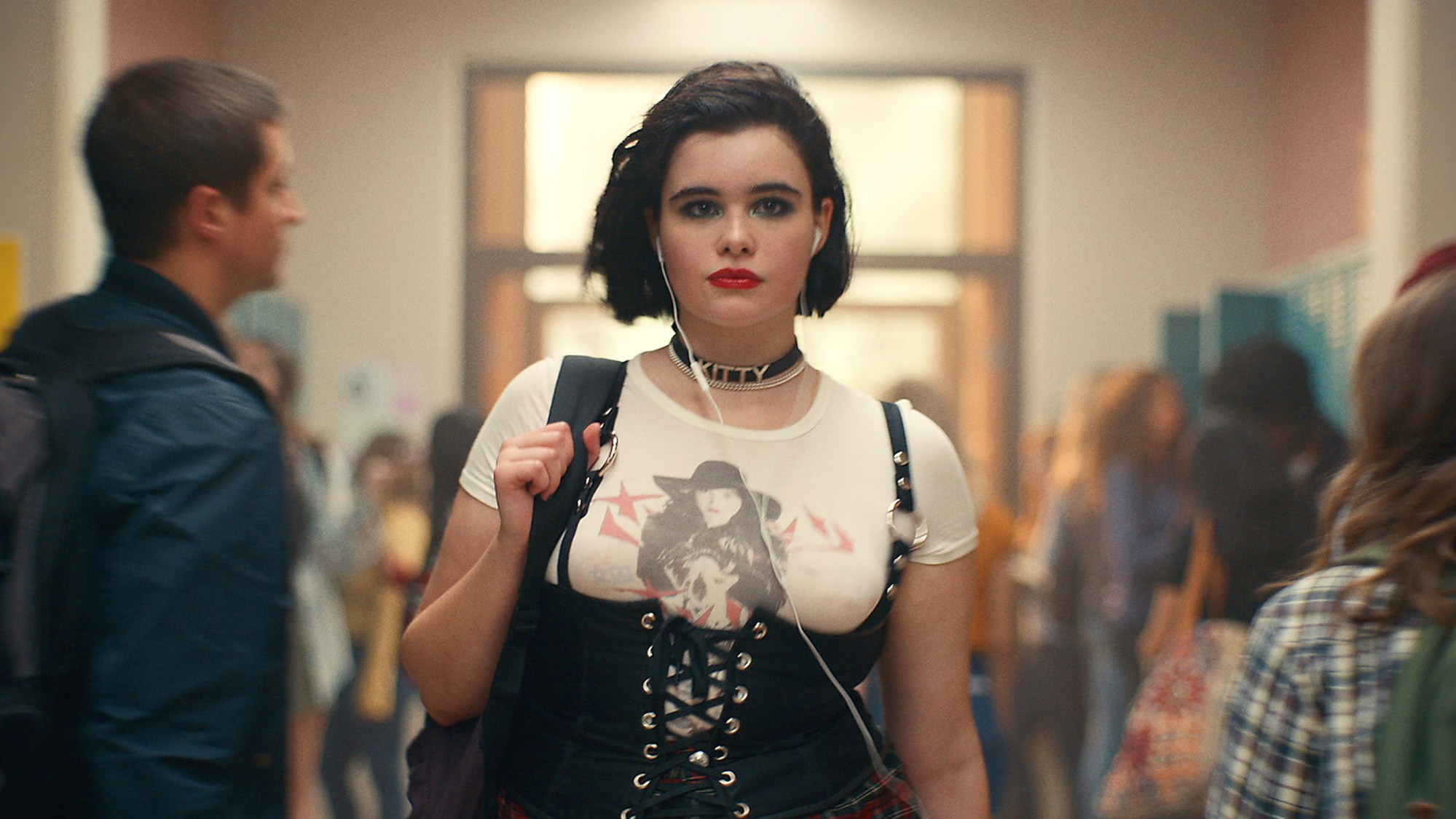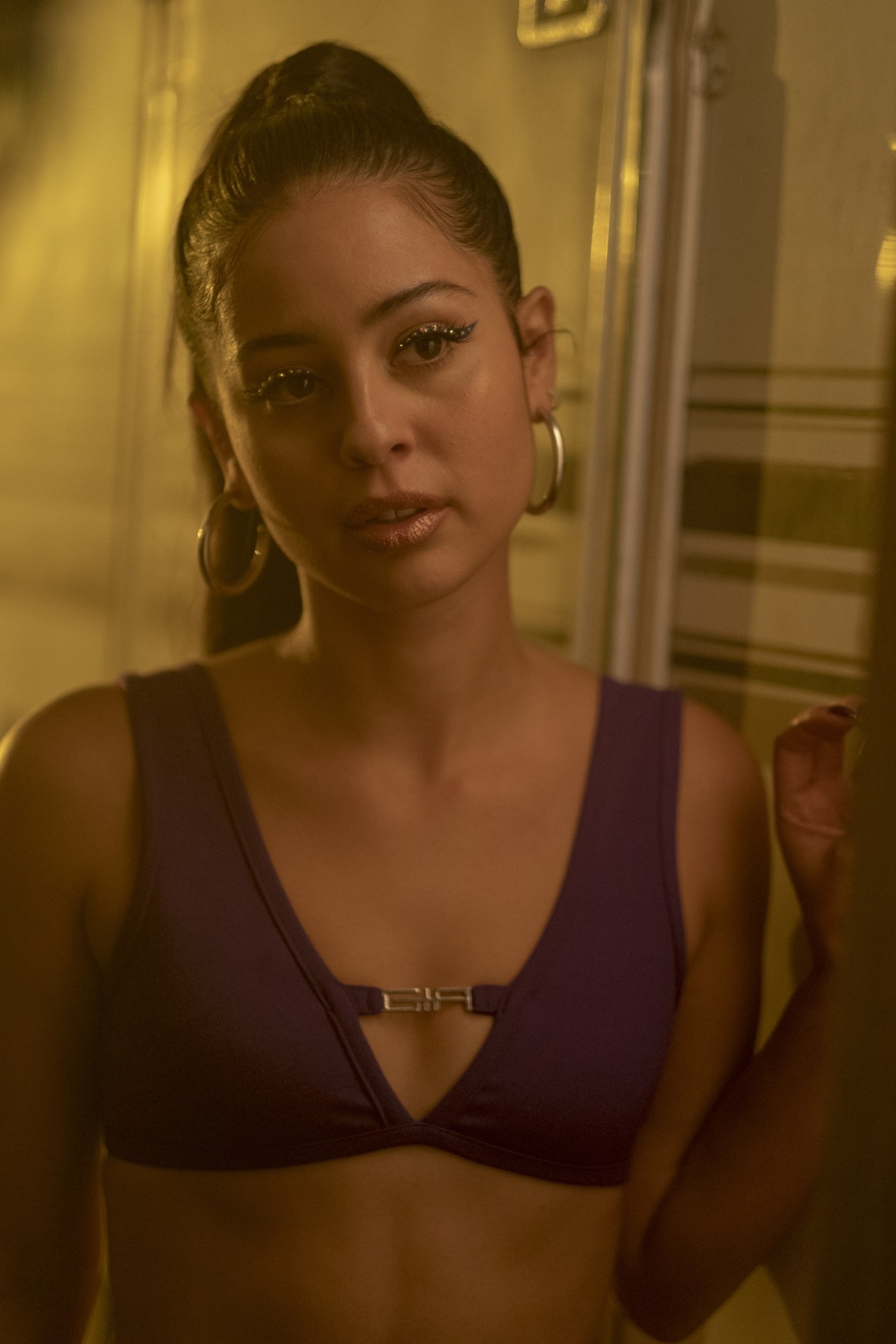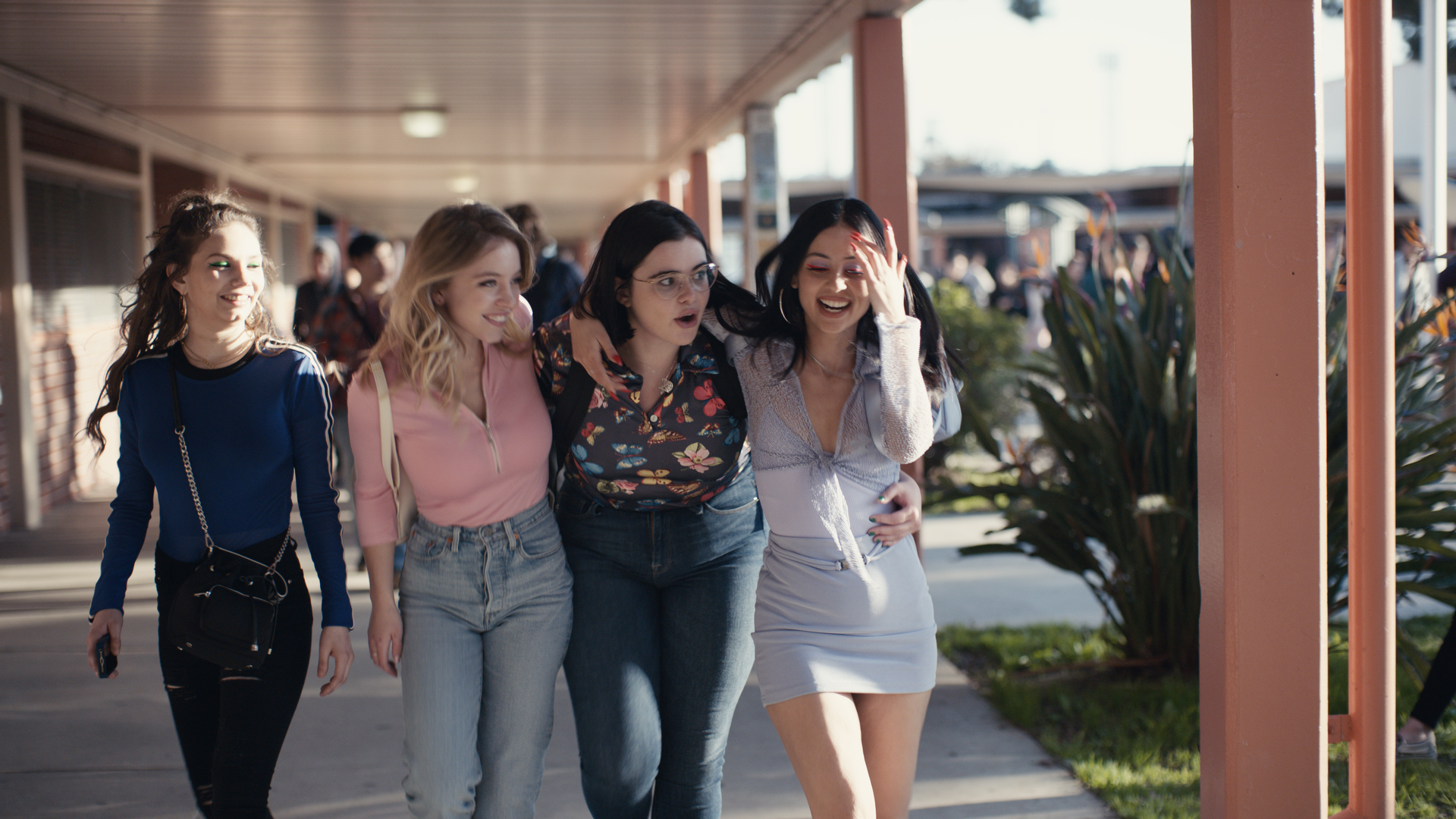It goes without saying that we were primed to love Euphoria and its wardrobe since the show’s pre-production announcement. Not only does the Drake-produced teen drama have a star-studded cast, including favorites Zendaya, Hunter Schafer, and Barbie Ferreira, but they are outfitted by costume designer Heidi Bivens. She’s responsible for the vibrant looks in Mid 90s, The Beach Bum, and Spring Breakers, and has a seemingly magical ability to create trends from thin air. It was this legacy and attention to detail that led its creator Sam Levinson to approach her for Euphoria.
This is the first time Bivens has taken on a TV show — the characters have hours of screen time and hundreds of outfit changes to cement their individual identities. “I like to think [the show] has its own vibe, and I think it hopefully feels identifiably like my design,” Heidi explains. “But that it has an original look that isn’t derivative of anything I’ve done previously.”

Euphoria is a great example of how fashion has become democratized, both in terms of the way we shop and how fashion is marketed to us. In the not so distant past, shows aimed at teenagers were aspirational in a way that was unrealistic to a fault. Think Blair Waldorf, headed to school, hair held back with in a prim headband with matching Fendi Peekaboo nestled in the crook of her elbow, or Marissa Cooper waltzing to Coldplay outside a school dance in head to toe Chanel. Stylists dressing adult actresses playing teenagers in aspirational cosplay set the trend for so long, as opposed to the other way around. Even reality shows like The Hills and The Simple Life played their part. All of them made target viewers want to ‘get the look’ sartorially, but they also made 16-year-olds feel bad about how they measured up to 25-year-olds with personal trainers and dermatologists.
In Euphoria, there’s a sense of normalcy that only heightens the ability to relate to it. The actresses are dressed like us. Bivens has done something even better than incidentally creating a new fad. She has seamlessly replicated an existing phenomenon — what Gen Z wears.

The pieces are sourced from all over and with all spectrums accounted for. High street and mid-range brands like Cotton Citizen and Reformation are represented, as well as cult and heritage fashion labels, from Eckhaus Latta to Jean Paul Gaultier. Streetwear brands feature heavily, with Sci-Fi Fantasy, Aries Arise, Stüssy, and obviously there’s a ton of Supreme. A Gildan hoodie is worn incongruously over an oversized Gosha Rubchinskiy ‘UFO’ t-shirt when Rue (Zendaya) visits her dealer for the first time after an insincere stint in rehab. It’s “a nod to Rue feeling like an outsider at times,” Bivens says. And a brief harbinger of the high/low mix that is a recurring theme. After being pestered about a situation she has no control over in the school cafeteria, her best friend Jules (Hunter Schafer) storms off in a skirt from Meadham Kirchoff’s 2013 Topshop collaboration. Perhaps, Jules’ interest in anime informs her bright, surreal style. And it all fits. What sounds like a confusing mishmash of tribalism is actually a thrillingly accurate depiction of how teenagers dress now. A hyper-stylized one, but no less impressive for it. Especially since there is no real hierarchy depicted in the show.

Maddy (Alexa Demie), is a glamorous, over the top, perfectly color coordinated caricature of a mean girl who could practically be an influencer, while her best friends are Cassie (Sydney Sweeney), a pretty sorority pledge in the making, and Kat (Barbie Ferreira), who evolves from a bookish wallflower and amateur fan fiction writer to a daringly provocative cam girl with a penchant for fetish gear. But while they are dressed differently, as a whole, there’s no real distinction between any of the characters’ looks.
Access, to the internet, apps like Etsy, Depop, and eBay, and the rise of direct-to-consumer retail, mean you can dress how you want, when you want. And because there’s so much access, exclusivity has become even more valuable. Not in the form of a designer dress, but a bootleg Louis Vuitton crop top and leggings, sold by a store on Shopify that might be weeks from shutting down. Shopping as an activity, unlike previously mentioned teen shows of yesteryear, isn’t really seen as part of their daily lives. The few scenes shot at a mall are quickly established as just another backdrop for the story. Nothing is especially trend driven (many of the pieces are apparently vintage) and even moments like Maddy losing her virginity, true to form, in a confectionary white bra from Trashy Lingerie’s Bridal collection, feel organic.

Of course these things are cyclical. Twitter accounts, Instagram feeds, and websites dedicated to the show have popped up, as well as listicles on various media websites eager to link you to a Poshmark listing where you might find Jules’ Alexander Wang ‘Girls’ tank top or a link to the infamous cut out i.am.gia two piece that caused Maddy so much trouble at the carnival. Apparently, it had to be custom made in purple, which is a recurring color for Maddy and one historically associated with delusions of grandeur.
Posting a picture of one of your pieces on Euphoria has become a badge of honor. Alexandra Spencer’s Réalisation Par has sold out of one of the dresses featured. LuQi Yu, a Chinese CSM graduate, designer and owner of NO DRESS, the IG only boutique that supplied the Upper East Side housewife meets Instathot cardigan and skirt seen on Maddy in episode two and more recently, on Megan Thee Stallion in London, has had to open a store to keep up with demand. And larger online retailers like Dollskill (who previously collaborated with Levinson to create a line of clothing inspired by his film Assassination Nation) have introduced brands worn in the show (or in the case of Fashion Nova, produced dupes of various dresses, pants and shirts).

It’s perhaps proof of a dramatic shift in media driven consumer behavior. Instead of looking for pieces like them, it’s possible to buy and wear exactly what a character has worn on the show, without even having to tone down the theatrical aspect. It’s wanting to wear something you think is cute or cool and that fits into your existing wardrobe. When asked if this effect was a shock to her, Bivens admits, “a little, but only because while we were working hard putting each episode together, I didn’t have the foresight to realize how much interest there would be in all the details of the costumes.”
Naturally, the clothes aren’t the main draw of the show, which is a sensitive, nuanced portrayal of escapism, depression, body issues, self esteem, and drug addiction. Bivens shares her hope that the takeaway for everyone watching is “to share your voice, be vulnerable, talk with others, express yourself, have no fear, lean on friends, be true to yourself and ask for help when you need it. A new generation is coming up who are inheriting a world that has become more complicated since even the last generation, and love and understanding are more important now than ever.” But the fact that they are so much a part of it, without taking you out of it is commendable and fascinating. Make your story about what it’s like to be a teen and the teesns will follow.
